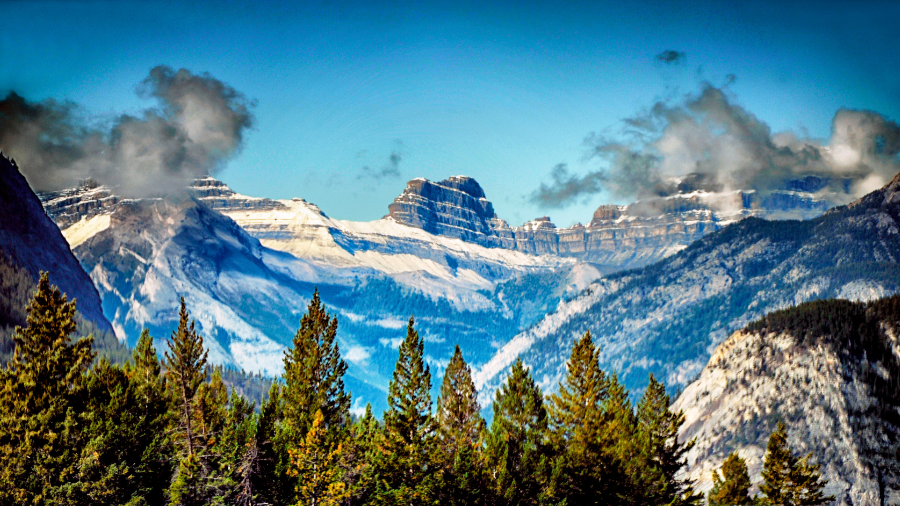This article originally appeared in the Financial Post.
By Heather Exner-Pirot, September 30, 2022
Straddling the B.C.-Alberta border lies the most valuable Canadian resource you’ve never heard of: the trillion-dollar Montney Formation, a giant gas field the size of New Brunswick and Nova Scotia combined. Its potential is huge but its future is uncertain. With the federal government’s proposed emissions cap, it may remain a sleeping giant.
The Montney Formation is a colossus, bigger even than the U.S.A.’s renowned Marcellus field, which helped set off the shale revolution. Largely overlooked before the innovation of hydraulic fracturing and horizontal drilling made it economically viable to exploit, it is now tapped to supply the nascent west coast LNG industry.
Its features make an oil geologist’s heart sing. It is huge; 130,000km2 to be exact. It is very thick; over 300m in some parts. And it is over-pressured, its hydrocarbons packed in like sardines. This all adds up to enormous reserves: a gas-in-place endowment of 1,965 trillion cubic feet (tcf), of which more than 449 tcf is recoverable with today’s technologies.
To get a handle on those numbers: Canada currently uses about 3.2 tcf a year so the Montney could supply us for over a century. And it contains the full spectrum of hydrocarbons: not only copious amounts of methane but a rich complement of natural gas liquids such as propane and butane and billions of barrels of oil to boot.
Next year it is expected to generate around $36 billion in revenues, more than four times what we saw with this year’s record potash production. Yet this is a fraction of its potential because the ability to get it to market is severely constrained.
That makes its location the icing on the cake. Encompassing Fort St. John, Dawson Creek and Grande Prairie, the Montney is in oil country, close to service companies, equipment and experienced labour. But most strategically it is in Canada’s northwest corner, giving it access to Asia, the world’s biggest and fastest growing energy market, where benchmark natural gas prices are far higher than they are in Canada.
The chattering classes in eastern Canada may hem and haw over whether exporting LNG across the Atlantic has a business case. But on the Pacific side, the business case is obvious: Asia has an energy-hungry population of 4.7 billion people, which by 2050 will grow by another 800 million people — more than the populations of the U.S. and EU combined. The consultancy S&P Global estimates Asia’s LNG demand will more than triple between now and 2030, and continue growing, albeit more slowly, from there.
What’s more, the distance of most major Asian markets from northwest B.C. is half that from the Gulf of Mexico, the cradle of American LNG exports. And if we do not provide LNG to countries such as Japan, Korea, China, India, Malaysia and Indonesia, they will have to resort to Russian supplies.
The Montney has a low CO2 footprint. When exported through B.C terminals, its LNG will have among the lowest carbon intensities in the world. Replacing Asian coal with Canadian LNG is a climate no-brainer.
First Nations in the area — from production in Treaty 8, to the pipeline route, to the west coast export terminals — are heavily involved and positioned to benefit in the tens of billions of dollars from the play.
If there is a hydrocarbon development anywhere else in the world that makes more economic, environmental and political sense, I have yet to hear about it. But for Ottawa, it seems, any Canadian fossil fuel project is a bad project. The federal government proposed in July a policy to cut oil and gas sector emissions by 42 per cent in just eight years. That would all but ensure the Montney’s vast reserves stay in the ground: we cannot build an entire LNG sector from scratch while simultaneously slashing emissions domestically.
On this point, the government should be more forthcoming with Canadians. If the environment minister sees a path forward for the Montney that is compatible with the emissions target, he should show that math. If not, he should let Canadians know the implications of the government’s proposal: it keeps over a trillion dollars worth of natural gas in the ground, gas the world desperately needs that would reduce global emissions by helping offset less clean energy sources.
The Montney is a gift from the gods, able to provide the world with affordable, reliable, low-emitting energy for decades to come. But alas it is in Canada. And because of that, it may well remain a geological marvel instead of an economic one.
Heather Exner-Pirot is a Senior Fellow at the Macdonald-Laurier Institute.






